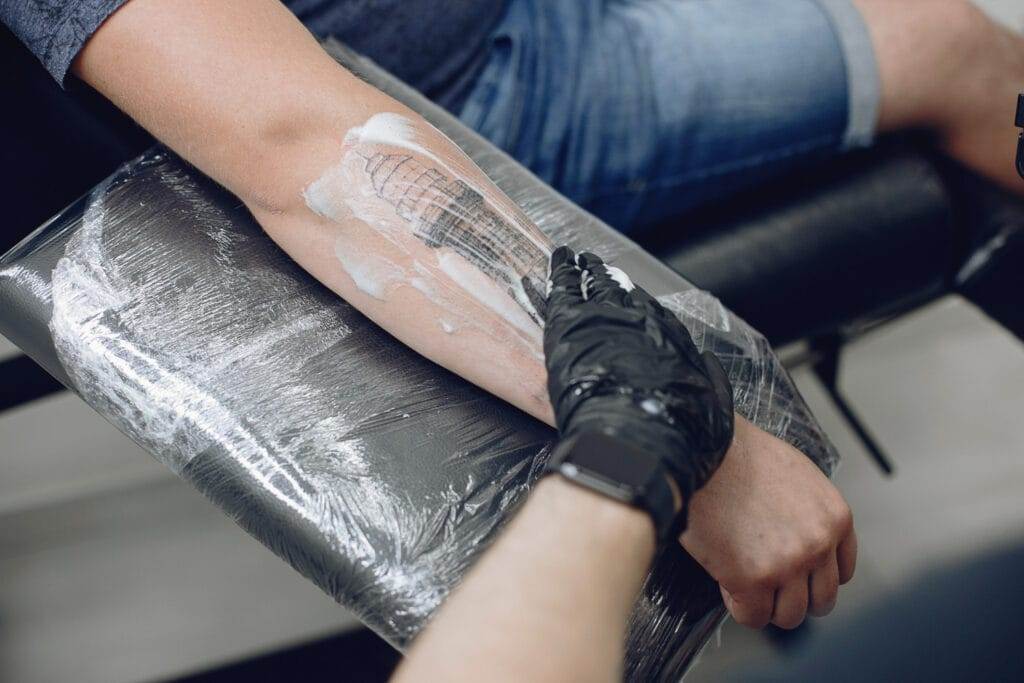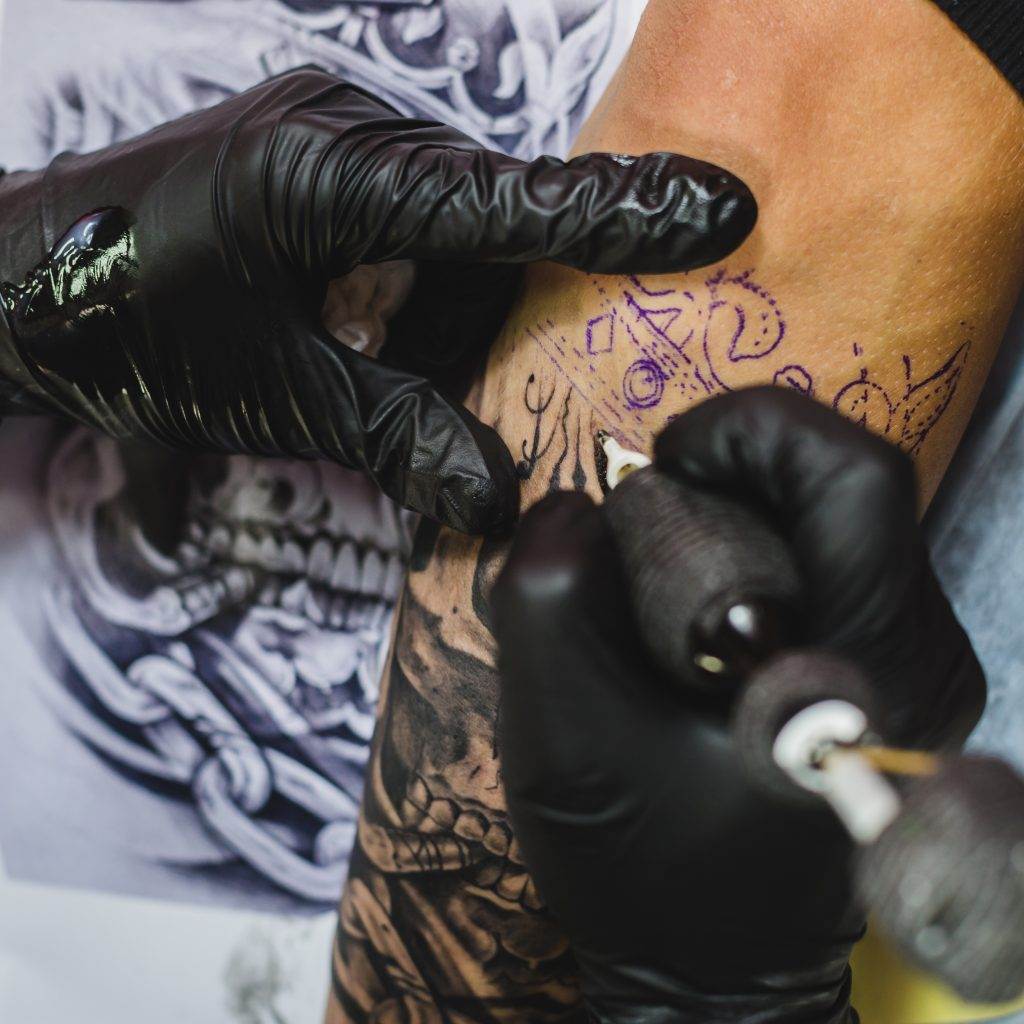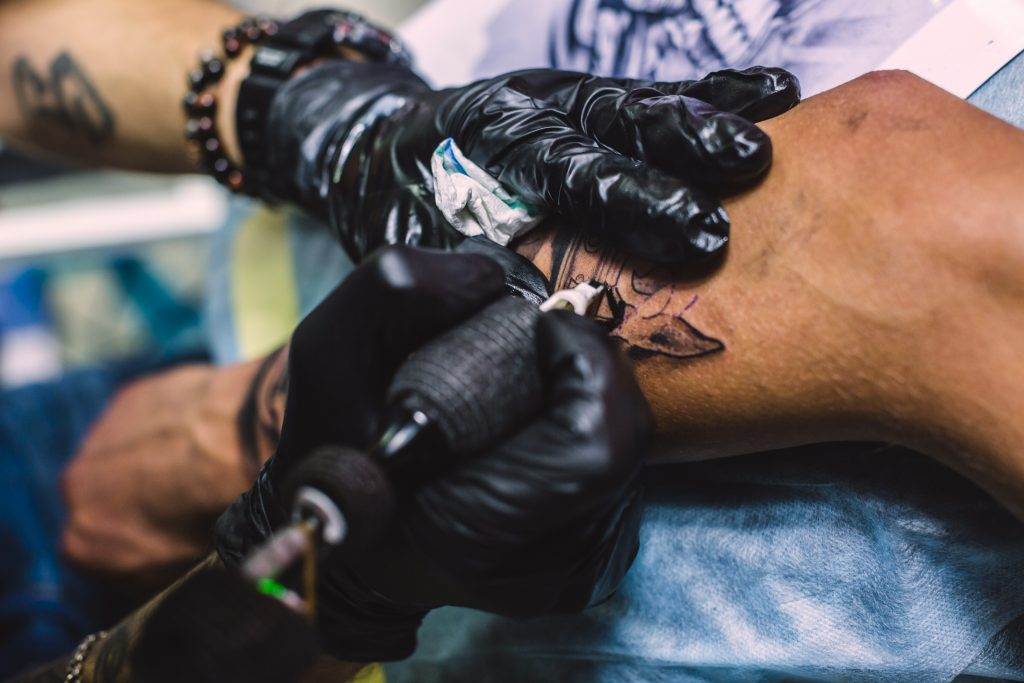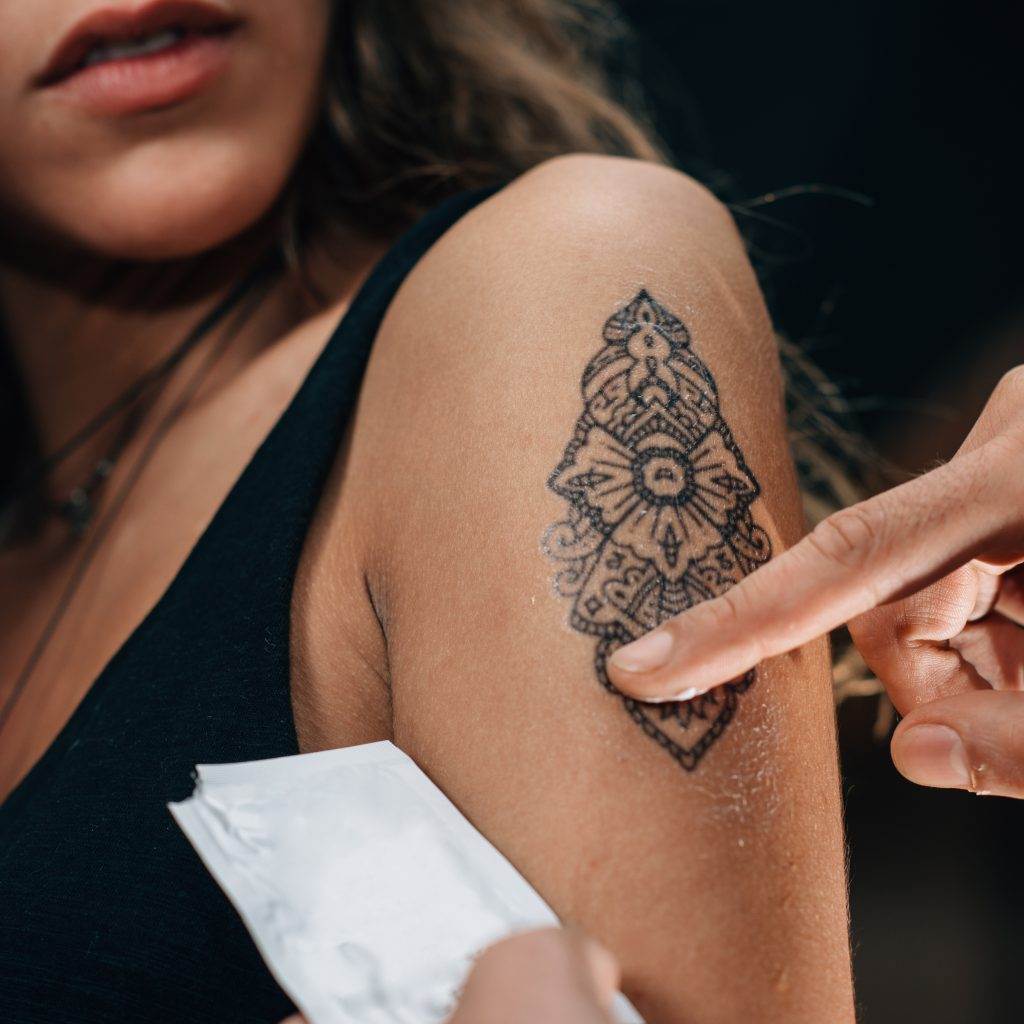Tattoos are a form of self-expression and art that can hold deep personal meaning. Whether you have a small, intricate design or a large, colorful piece, it’s important to maintain the quality and longevity of your tattoo art. This is where tattoo touch-ups come into play. Tattoo touch-ups are sessions where a professional artist goes over your existing tattoo to refresh the colors, lines, and details that may have faded or blurred over time. These touch-ups are crucial for keeping your tattoo looking vibrant and crisp.
The importance of tattoo touch-ups lies in the fact that tattoos are not permanent. Over time, the ink in your skin can fade or change color due to various factors such as sun exposure, aging, and the natural healing process of your body. Additionally, the skin around the tattoo can stretch or shrink, causing the lines and details to become distorted. By getting regular touch-ups, you can ensure that your tattoo maintains its original beauty and continues to represent what it means to you.
Signs that Your Tattoo Needs a Touch-Up
There are several signs that indicate your tattoo may need a touch-up. One of the most common signs is fading or discoloration of the tattoo. Over time, exposure to sunlight and other environmental factors can cause the colors in your tattoo to fade or change. If you notice that your tattoo is looking dull or less vibrant than when you first got it, it may be time for a touch-up.
Another sign that your tattoo needs a touch-up is blurring or loss of detail. As your skin ages and goes through natural changes, the lines and details of your tattoo can become less defined. This can make the design appear blurry or less crisp. A touch-up session can help sharpen those lines and bring back the intricate details of your tattoo.
Uneven lines or shading is another indication that your tattoo may need a touch-up. Sometimes, during the healing process, the ink may not settle evenly in the skin, resulting in patchy or inconsistent lines and shading. A touch-up can help even out the color and ensure that your tattoo looks smooth and uniform.
Lastly, if you notice that your tattoo is peeling or flaking, it may be a sign that the ink did not fully penetrate the skin during the initial tattooing process. This can result in areas of the tattoo that appear faded or incomplete. A touch-up can fill in those areas and make your tattoo look complete.
Preparing for Your Tattoo Touch-Up Appointment
Before your touch-up appointment, it’s important to properly care for your skin to ensure the best results. This includes keeping your skin clean and moisturized leading up to the appointment. Avoid using any harsh or abrasive products on the area that will be touched up.
It’s also important to avoid certain activities or substances that can affect the healing process. This includes avoiding excessive sun exposure, swimming in pools or hot tubs, and using any products that may irritate the skin. Following these guidelines will help ensure that your skin is in the best possible condition for the touch-up session.
During your consultation with the artist, discuss any changes or modifications you want to make to the tattoo. This could include adding new elements, adjusting the size or placement, or changing the colors. It’s important to communicate your desires clearly so that the artist can plan accordingly and provide you with the best possible results.
What to Expect During Your Tattoo Touch-Up Session
During your touch-up session, the artist will go over your existing tattoo to refresh the colors, lines, and details. The process is similar to getting a tattoo, but it typically takes less time since it’s focused on specific areas rather than creating a new design from scratch.
Pain management techniques will vary depending on your pain tolerance and the location of the tattoo. Some artists may use numbing creams or sprays to minimize discomfort, while others may use ice packs or other cooling methods. It’s important to communicate with your artist about any pain or discomfort you may be experiencing during the touch-up session.
The time and cost considerations for a touch-up session will depend on the size and complexity of your tattoo. Smaller tattoos may only require a short session, while larger or more intricate designs may take multiple sessions to complete. The cost will also vary depending on the artist’s rates and the amount of work required.
Aftercare Tips for Your Newly-Touched Up Tattoo

After your touch-up session, it’s important to properly care for your tattoo during the healing process. This includes keeping the area clean and moisturized, avoiding excessive sun exposure, and refraining from picking or scratching at the tattoo.
It’s also important to avoid certain activities or substances that can affect the healing process. This includes avoiding swimming in pools or hot tubs, using harsh or abrasive products on the tattoo, and exposing the tattoo to excessive heat or friction.
If any issues arise during the healing process, such as excessive redness, swelling, or infection, it’s important to follow up with your artist. They can provide guidance and advice on how to properly care for the tattoo and address any concerns you may have.
Dealing with Fading and Discoloration in Old Tattoos
Over time, tattoos can fade or change color due to various factors. This can be frustrating if you have a tattoo that holds deep personal meaning or if you simply want to maintain the quality of your tattoo art.
There are options for restoring or refreshing an old tattoo that has faded or become discolored. One option is to get a touch-up session with a professional artist who specializes in color correction. They can go over the existing tattoo and refresh the colors to make it look vibrant again.
Another option is to consider getting a cover-up tattoo. This involves getting a new design that incorporates and covers up the old tattoo. Working with an experienced artist is crucial for cover-up tattoos, as they need to carefully plan and execute the design to ensure that the old tattoo is fully covered and the new design looks seamless.
Covering Up Mistakes and Regrettable Tattoos with Touch-Ups
Sometimes, we may find ourselves regretting a tattoo that we once loved. Whether it’s because our tastes have changed or because the tattoo didn’t turn out as expected, it’s important to know that there are options for covering up or modifying a tattoo that you no longer like.
One option is to work with an experienced artist who specializes in cover-up tattoos. They can help you come up with a design that will effectively cover up the old tattoo and create a new piece of art that you love. It’s important to be open and honest with the artist about your concerns and expectations so that they can create a design that meets your needs.
Another option is to consider getting a touch-up session to modify the existing tattoo. This could involve adding new elements, adjusting the size or placement, or changing the colors. A skilled artist can work with you to transform the tattoo into something that you’re happier with.
Cost Considerations for Tattoo Touch-Ups
The cost of a tattoo touch-up will vary depending on several factors. These factors include the size and complexity of the tattoo, the artist’s rates, and the amount of work required.
Smaller touch-ups may only require a short session and may be more affordable compared to larger or more intricate designs that require multiple sessions. It’s important to discuss the cost with your artist during the consultation so that you have a clear understanding of what to expect.
While cost is an important consideration, it’s also important to invest in quality work and maintain the longevity of your tattoo. A touch-up session may seem like an additional expense, but it’s crucial for keeping your tattoo looking its best and ensuring that it continues to represent what it means to you.

Frequently Asked Questions about Tattoo Touch-Ups
1. How often should I get a touch-up for my tattoo?
The frequency of touch-ups will depend on several factors, including how well you take care of your tattoo, how much sun exposure it gets, and how your body naturally heals. In general, it’s recommended to get a touch-up every 2-5 years to maintain the quality and vibrancy of your tattoo.
2. Will getting a touch-up hurt?
The level of pain during a touch-up session will vary depending on your pain tolerance and the location of the tattoo. Some areas may be more sensitive than others. However, many artists use pain management techniques such as numbing creams or sprays to minimize discomfort.
3. Can I make changes to my tattoo during a touch-up session?
Yes, you can discuss any changes or modifications you want to make to your tattoo during the touch-up session. This could include adding new elements, adjusting the size or placement, or changing the colors. It’s important to communicate your desires clearly with your artist so that they can plan accordingly.
Embracing the Beauty and Longevity of Your Tattoo Art
In conclusion, tattoo touch-ups are crucial for maintaining the quality and longevity of your tattoo art. By getting regular touch-ups, you can refresh the colors, lines, and details of your tattoo, ensuring that it continues to look vibrant and crisp over time.
If you notice signs such as fading, blurring, or peeling in your tattoo, it may be time for a touch-up. Finding the right artist who specializes in touch-ups is important for getting the best results. Properly caring for your skin before and after the touch-up session is crucial for ensuring a successful healing process.
Whether you’re looking to refresh an old tattoo, cover up a regrettable one, or simply maintain the beauty of your existing tattoo, touch-ups are an important part of the process. Embrace and enjoy your tattoo art for years to come by investing in quality work and regular touch-ups.



